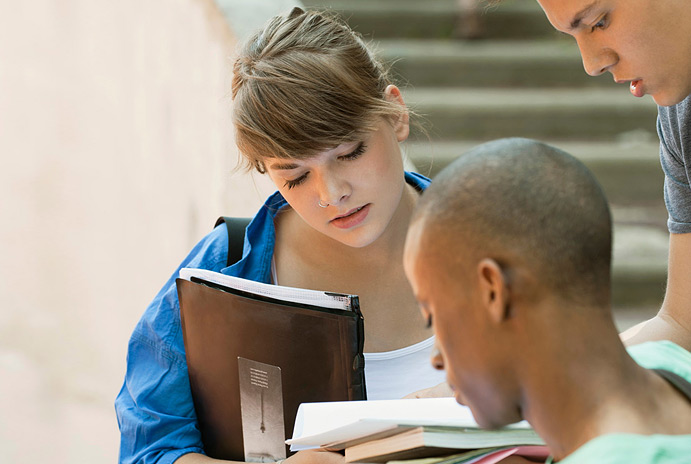Upper-secondary school
Engelska (ENG)
For young people between the ages of 16 and 20.
Young people who have finished compulsory school may choose to continue studying in upper-secondary school, which is voluntary and free of charge. The upper-secondary school primarily consists of national programmes and introductory programmes.

The upper-secondary school is for those who are between the ages of 16 and 20. You can begin upper-secondary school no later than the year that you turn 20. After you have turned 20, there is a possibility of studying in adult education. Upper-secondary school is voluntary and free of charge.
The main task of upper-secondary school is conveying knowledge and creating conditions for the pupils to acquire and develop knowledge. The education shall promote the pupils’ development into responsible people, who actively participate in and develop professional life and civic life.
Upper-secondary schools can be organised in different ways
There are municipal, independent and county-council-operated upper-secondary schools. All schools are obliged to follow the Education Act, among other things when it concerns education content and grading.
Every upper-secondary school has the possibility of having a special profile, such as English classes or culture and sports classes.
Independent schools are open to all and the teaching must be equivalent to that provided in municipal schools. Independent schools have a different operator (owner) than the municipality.
National programmes
There are a total of 18 national upper-secondary school programmes, of which six are university-preparatory programmes and 12 are vocational programmes. Every programme lasts three years.
All pupils in the university preparatory programmes shall do an upper-secondary project that shows that the pupil is prepared for higher studies at university.
All vocational programmes contain at least 15 weeks of on-the-job learning where the education takes place at a workplace. A vocational programme can also be carried out as an upper-secondary apprentice programme, where at least half of the programme takes place at a workplace. All pupils in vocational programmes shall do an upper-secondary project that shows that the pupil is prepared to work in the area that the programme prepares them for.
If you do not qualify for a national programme, there are four introductory programmes. They provide an opportunity to later enter the national upper-secondary programmes or go out into working life.
Introductory programme
Introductory programmes are for those who do not qualify for the national programmes in upper-secondary school. What programme you can attend depends, among other things, on what your goal is with your education in the programme. An alternative to attending an introductory programme is to continue in compulsory school for up to an additional two years to qualify. The introductory programme shall give those who do not qualify for a national programme an opportunity to enter such a programme or lead to you being able to get a job.
Assessment and learning in upper-secondary school
In school, you continuously receive information on what you have learned in relation to the programme and the teaching objectives.
The teacher, you yourself and other pupils can provide feedback that contributes to guiding you forward in your learning. You and the teacher also discuss what you should do to move further in your studies based on an assessment of what you need and already know. It is important that you yourself obtain an understanding of your own learning and need for development.
Development talks in upper-secondary school
At least once every semester, you, your teacher and your guardian (if you are under 18) meet to go through how it is going in school and how you are doing. This is called a development talk. The talk shall provide a picture of both your knowledge development and your social development.
During the talk, you will discuss how the school can support and stimulate your development and learning. The talk provides you and your guardian an opportunity to influence and take responsibility for your schooling. Here, one takes up your potential need for extra adaptations and special support, among other things.
Grades and grading in upper-secondary school
Pupils in national programmes receive grades after every completed course. In each course, there are knowledge requirements that state what you must achieve. Grades are set on every completed course and on the upper-secondary project.
At introductory programmes, the teacher sets grades after each completed course or compulsory subject.
The grading scale has six levels: A – F. A-E represent passing results and F is for a failing result. Once you have received grades on all courses and on the upper-secondary project, you will receive a final grade. A dash instead of a grade is set if you had such extensive absences that the teacher cannot set a grade in the subject.